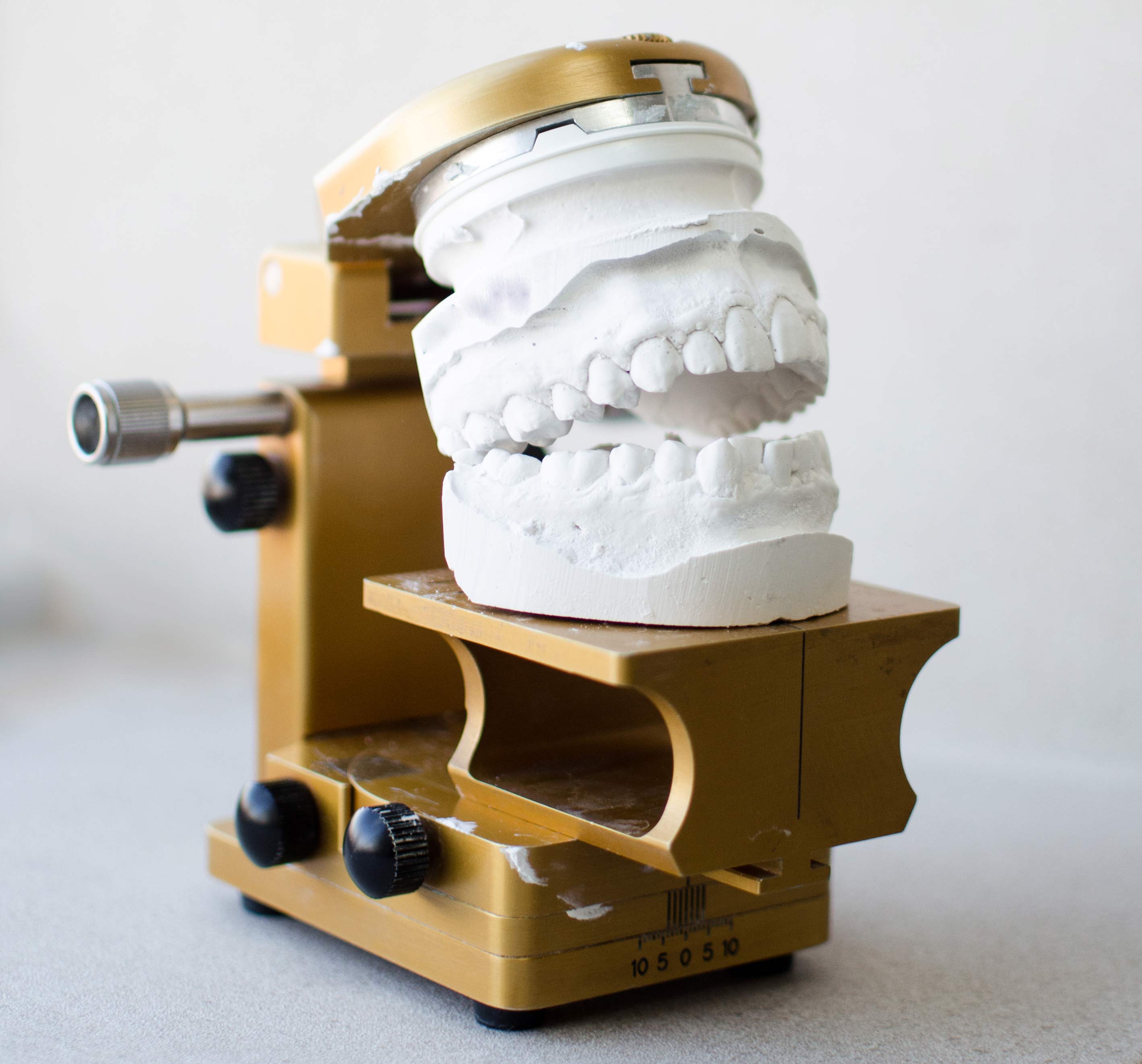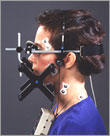Discussion and examination take place at the initial consultation appointment when the patient reports time of onset, duration and intensity of pain in the affected area. The examination explores the pattern of jaw movement to detect sounds and tenderness to gentle pressure.
Further diagnostic testing is indicated when the presence of jaw joint dysfunction is suspected. Further testing is designed to properly diagnose the patient's problem and to try to reduce the signs and symptoms of the dysfunction.
To determine if the lower jaw and the disc of the TM joints are in the correct position, the following diagnostic tests are used:
Medical and Dental History as well as an examination of the teeth and the dental arches.
TMJ Health Questionnaire: Patients are asked questions regarding possible TM dysfunction symptoms. If the patient answers "yes" to any of the symptoms and "yes" to clenching and bruxing, then further tests are required to confirm the presence of a jaw joint problem (TM disorder).
Click here to view a TMJ Self-Assessment Questionnaire.
Patients are checked for how wide they can open, slide left and right, move the jaw forward, and whether or not there is a deviation or deflection of the jaw upon opening. If there is a problem achieving normal range of motion, there is usually a structural problem within the joint.

Excessive muscle contractions and trigger points indicate a problem with the chewing muscles of mastication. This causes the muscles of the head and neck to be sore when pressed by the dentist. This usually means that the lower jaw is not in the correct position.
This is specialized equipment used to take readings of the noises or vibrations occurring within the jaw joints upon opening and closing movements. The JVA is simply a 3-minute, non-invasive test where headphones are placed on both jaw joints and the patient is instructed to open and close six times. An abnormal or dislocated joint has distinctive vibrations which can be analyzed to help diagnose the seriousness of the problem.

This specialized equipment takes readings of the force and time that each tooth comes together and apart. This testing will determine if there is a bite or occlusal problem involved.
Once it has been determined that there is a TMD problem, further diagnostic testing is required. This involves x-rays (tomographs, panorex, etc.), EMG, mounted diagnostic casts with a ultra low frequency TENS and appropriate bite registration.
There are basically 5 stages of disc displacement. Ideally, if there is a jaw problem you would hope that the patient is in Stage 1 or Stage 2 where the disc can eventually be recaptured. If the JVA reveals that the patient is in Stage 3, 4 or 5, this is a much more serious problem and the prognosis is not as good for resolution of all the symptoms.